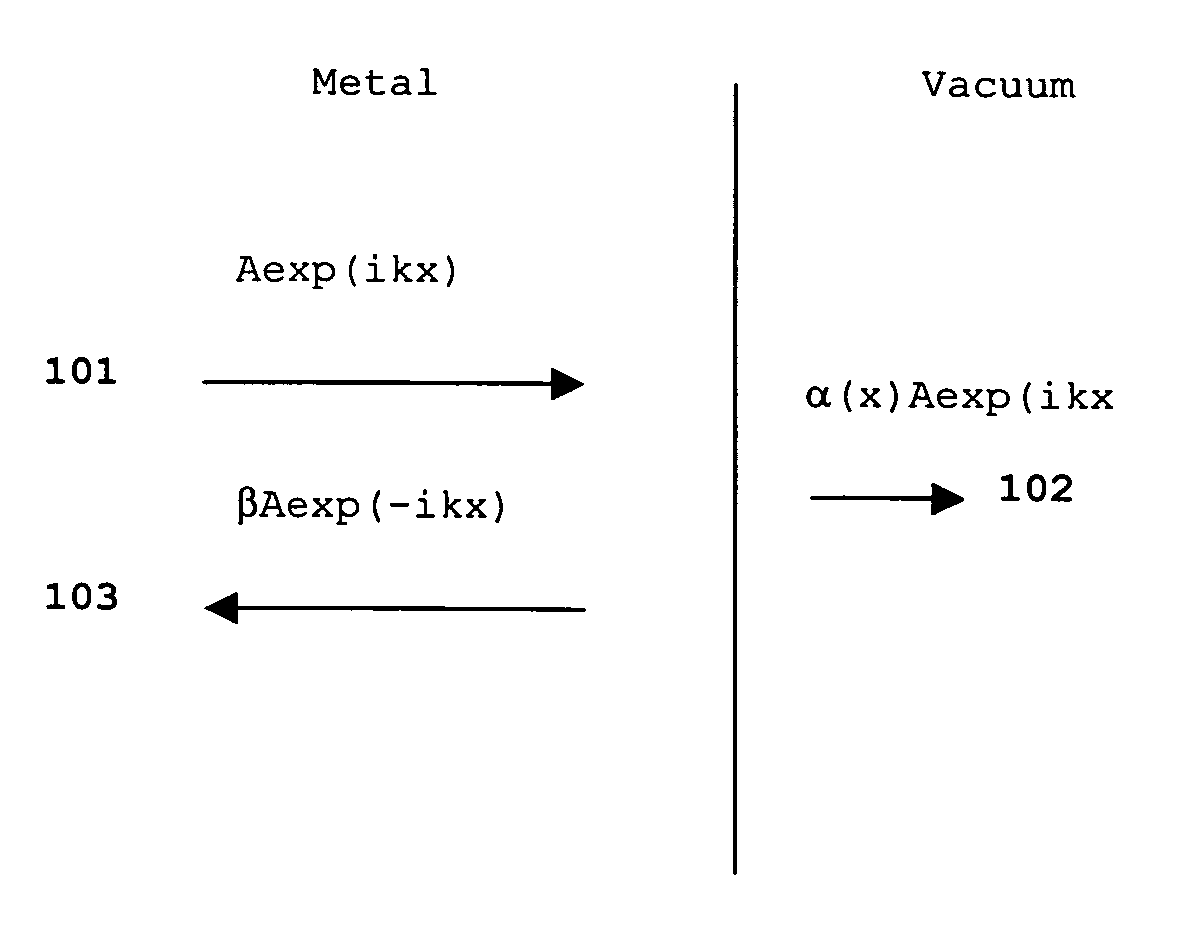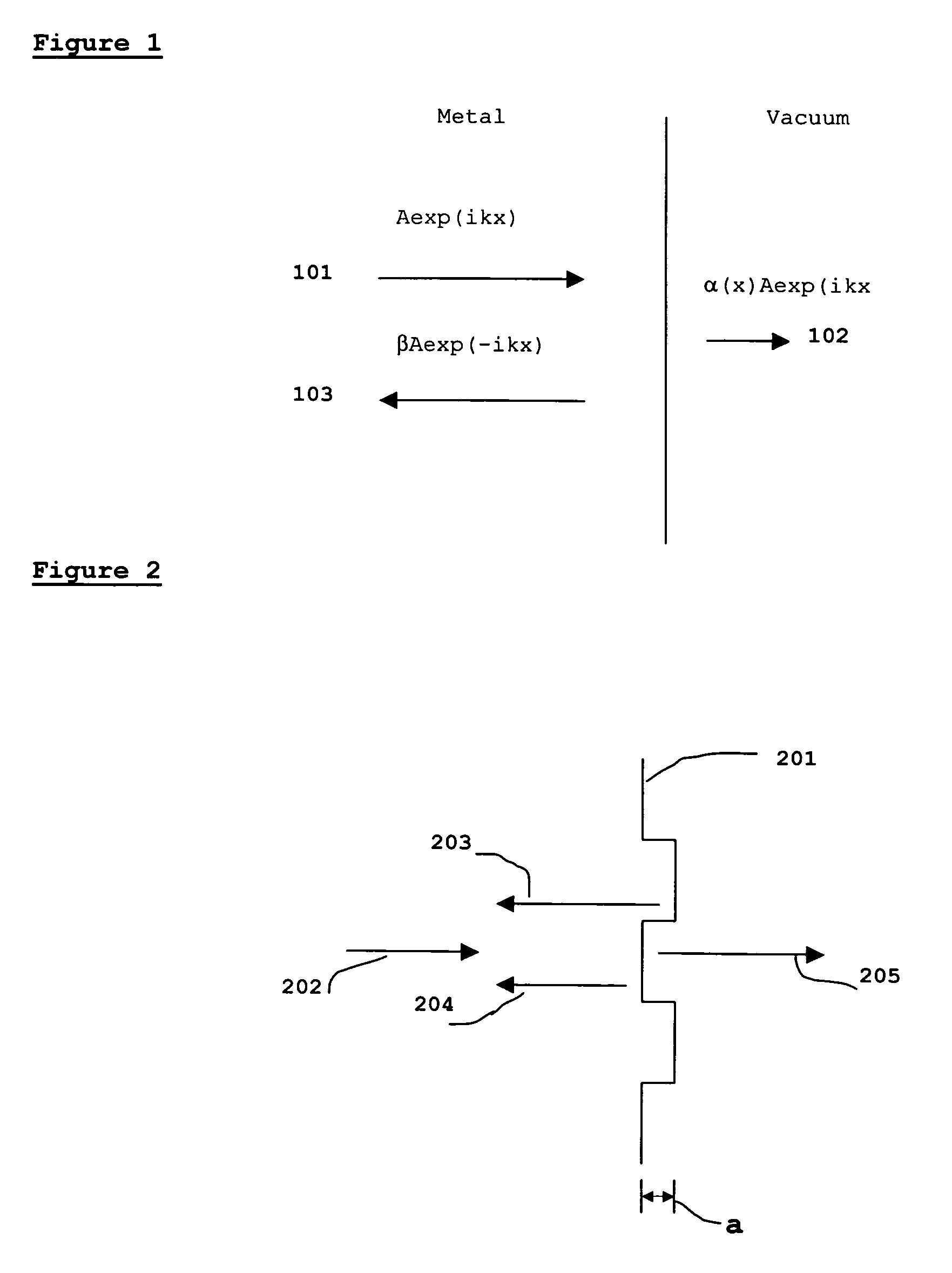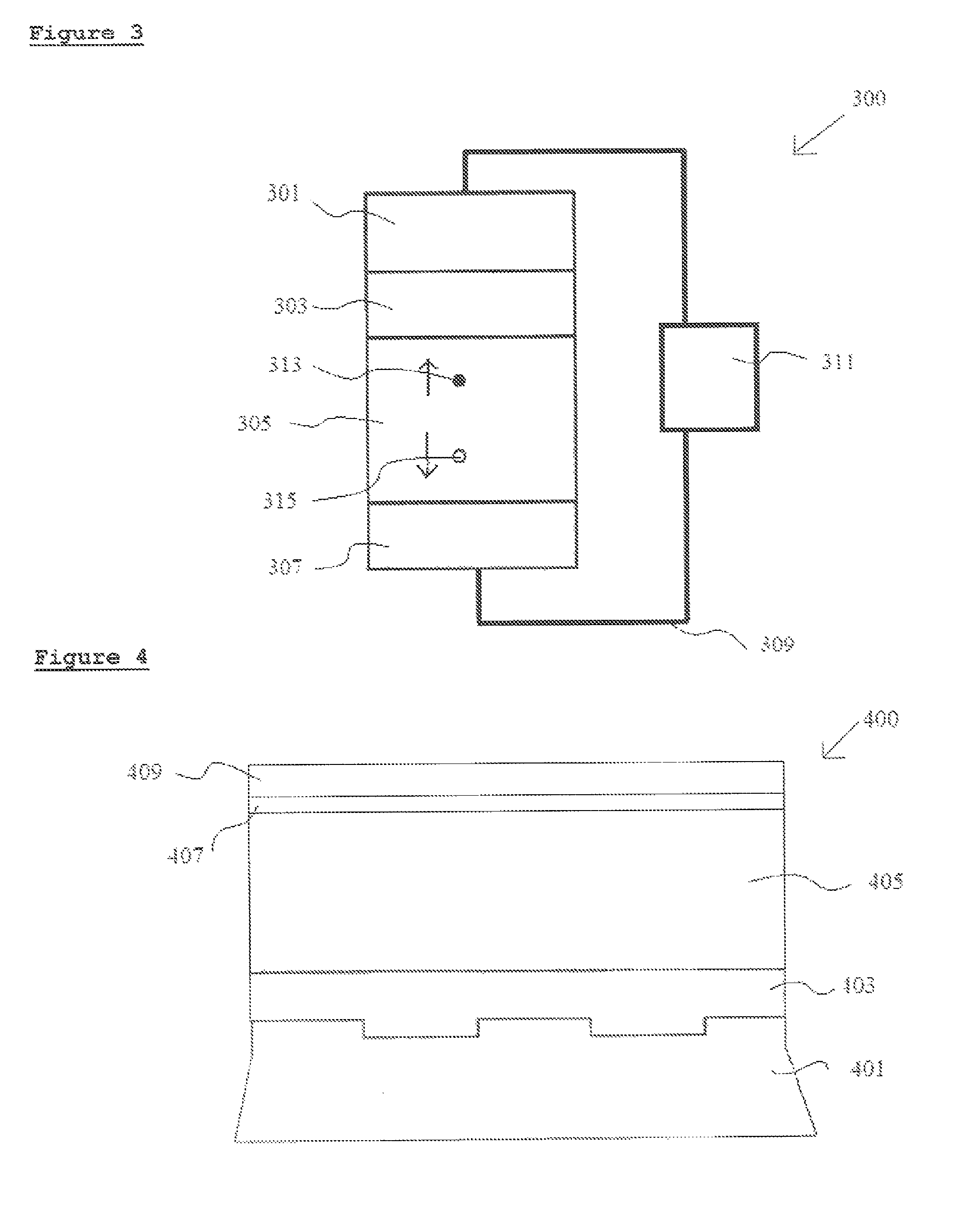Thin film solar cell
a thin film solar cell and solar cell technology, applied in the field of thin film solar cells, can solve the problems of low efficiency, energy band gap, thin film solar cell, etc., and achieve the effects of reducing work function, improving solar cell efficiency, and increasing energy outpu
- Summary
- Abstract
- Description
- Claims
- Application Information
AI Technical Summary
Benefits of technology
Problems solved by technology
Method used
Image
Examples
Embodiment Construction
[0049]The embodiments of the present invention and its technical advantages are best understood by referring to FIGS. 4-5. The present invention relates to a thin film solar cell, in which the structure of the metal back contact is modified, thereby improving the efficiency of the cell.
[0050]Referring now to FIG. 4, which shows a cross sectional view of the thin film solar cell of the present invention. Shown is solar cell 400 comprising carrier layer, 401, metal back contact, 403, p-type semiconductor absorber layer, 405, n-type semiconductor collector layer 407 and ZnO window layer 409.
[0051]The surface of carrier layer 401 is modified with nanoscale indentations or protrusions to have a periodically repeating structure of one or more indents or protrusions. Methods for carrying this out are well known to those skilled in the art and include screen printing, as used for printing CD surfaces, electron beam lithography and other imprinting processes. In a preferred embodiment of the...
PUM
| Property | Measurement | Unit |
|---|---|---|
| width | aaaaa | aaaaa |
| depth | aaaaa | aaaaa |
| thickness | aaaaa | aaaaa |
Abstract
Description
Claims
Application Information
 Login to View More
Login to View More - R&D
- Intellectual Property
- Life Sciences
- Materials
- Tech Scout
- Unparalleled Data Quality
- Higher Quality Content
- 60% Fewer Hallucinations
Browse by: Latest US Patents, China's latest patents, Technical Efficacy Thesaurus, Application Domain, Technology Topic, Popular Technical Reports.
© 2025 PatSnap. All rights reserved.Legal|Privacy policy|Modern Slavery Act Transparency Statement|Sitemap|About US| Contact US: help@patsnap.com



